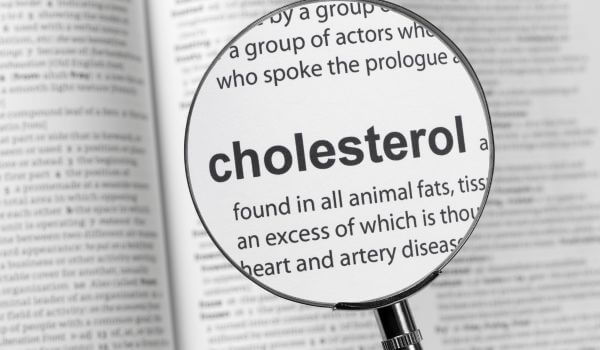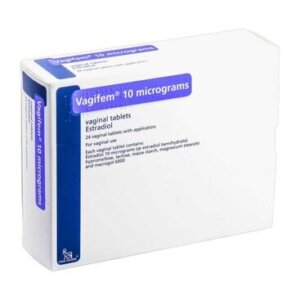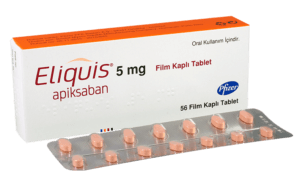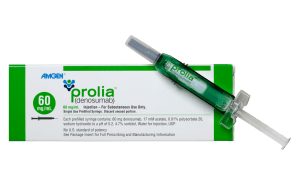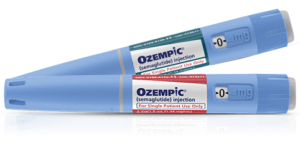 Difficulty breathing is a common experience, but for millions of people worldwide, it’s a daily struggle that for many of them is caused by chronic lung diseases like asthma and chronic obstructive pulmonary disease (COPD). Asthma and COPD bear many similarities in their symptoms, but they are fundamentally different in both causes and optimum treatments. Many people also have what is known as asthma-COPD overlap Syndrome (ACOS), which occurs when a person has both conditions. Before understanding the specifics of ACOS, it is necessary to have a good understanding of asthma and COPD.
Difficulty breathing is a common experience, but for millions of people worldwide, it’s a daily struggle that for many of them is caused by chronic lung diseases like asthma and chronic obstructive pulmonary disease (COPD). Asthma and COPD bear many similarities in their symptoms, but they are fundamentally different in both causes and optimum treatments. Many people also have what is known as asthma-COPD overlap Syndrome (ACOS), which occurs when a person has both conditions. Before understanding the specifics of ACOS, it is necessary to have a good understanding of asthma and COPD.
What is Asthma?
Asthma is a chronic lung disease that causes inflammation and narrowing of the airways. This inflammation makes the airways highly sensitive, leading them to tighten in response to specific triggers, like allergens or irritants. Although it can develop at any age, asthma often first appears in childhood.
While the causes of asthma will differ from person to person, some distinct features are standard across a large percentage of people with the condition:
- Asthma often runs in families, which means there can be a genetic predisposition. If a parent has asthma, their children may be more likely to develop it.
- Exposure to external environmental factors (allergens such as pollen, dust mites, pet dander, and air pollution) can trigger asthma attacks.
- Smoking and exposure to secondhand smoke are also associated with asthma.
The main symptoms of asthma are wheezing (a whistling sound when breathing), shortness of breath, chest tightness, and coughing, particularly at night or early in the morning.
Asthma symptoms vary in severity and frequency. Some people may experience mild symptoms occasionally, while others might have severe symptoms that interfere with daily life.
What is Chronic Obstructive Pulmonary Disease (COPD)?

- Emphysema is a condition that results from damage to the walls of the air sacs in the lungs (alveoli). An obstruction may develop as the alveoli progressively lose their sponginess, which traps air inside the lungs.
- Bronchitis is an inflammation of the bronchi (lung airways) that results in a persistent cough that can produce considerable quantities of sputum (phlegm). It is more common in smokers and areas with high atmospheric pollution.
The primary cause of COPD is cigarette smoke, which damages the airways and lung tissue. It is the leading cause of COPD worldwide and in all age groups. Long-term exposure to irritants, such as dust, chemicals, and pollution, can be a significant cause, but the degree differs markedly from country to country and even within countries. There is also a rare genetic condition called alpha-1 antitrypsin deficiency, which can cause COPD even in non-smokers.
The main COPD symptoms are a persistent cough, often with mucus production; shortness of breath, especially during physical activities; wheezing; and tightness of the chest.
The symptoms of COPD tend to worsen over time, and this can eventually severely impact a person’s ability to perform everyday activities.
What is Asthma-COPD Overlap Syndrome (ACOS)?
When asthma and COPD symptoms coexist, the condition is known as asthma-COPD overlap Syndrome (ACOS). It can present a diagnostic and management challenge for healthcare professionals, so it is important to know what differentiates ACOS from ordinary asthma or COPD.
It is more difficult to distinguish between COPD and ACOS, because ACOS is estimated to affect up to 15-50% of people diagnosed with COPD. It’s more common in older individuals with a smoking history but can also occur in non-smokers. While asthma and COPD have specific features that make it easier for doctors to identify them as distinct respiratory conditions, ACOS presents features of both. ACOS patients exhibit a combination of the features of asthma, such as reversible airflow obstruction that is often associated with allergies, and the features of COPD, in which there is irreversible airflow limitation, most often linked to smoking and environmental exposures. As well, COPD usually progresses, leading to more severe symptoms, increased exacerbations, and a more significant decline in lung function over time.
ACOS patients exhibit a combination of these features, leading to more severe symptoms, increased exacerbations, and a more significant decline in lung function over time. Symptoms may also be more variable than in typical asthma or COPD.
ACOS can be difficult to diagnose because the tests used for each disease may not be entirely definitive. Reaching a differential diagnosis of ACOS involves a comprehensive assessment of the patient’s clinical medical history, physical examination, and pulmonary function tests. Given the known inheritability of asthma, doctors usually investigate the patient’s family history to pin down these markers.
Key diagnostic criteria include a history of asthma attacks, as well as the persistent airflow limitation characteristic of COPD. Spirometry, a test to measure how much air can be inhaled and exhaled, is essential to assess lung function and determine the degree of airflow obstruction. Additional tests, such as measuring eosinophil counts (biomarkers), may aid in separating ACOS from asthma or COPD alone. Accurate diagnosis is crucial, as it influences the patient’s therapeutic approach and management strategies.
Management and Treatment of Asthma, COPD and ACOS
Asthma Management and Treatment
Asthma is often managed with a combination of medication and lifestyle changes:
- Inhaled corticosteroids like Arnuity and Foradil/Oxis reduce inflammation in the airways.
- Short-acting rescue inhalers such as Ventolin and Duoneb provide quick relief by opening the airways quickly when acute asthma attacks occur.
- Bronchodilators such as Trelegy Ellipta and Qvar relax the muscles around the airways for long-term maintenance treatment for both asthma and COPD.
- Lifestyle adjustments to avoid triggers are also essential.
COPD is managed through:
- Bronchodilators like Breztri / Trixeo Aerosphere and Ultibro Breezhaler help open the airways.
- Inhaled corticosteroids known as long-acting β2-agonist (LABA) and long-acting muscarinic antagonist (LAMA) act to reduce airway inflammation. Trimbow is a triple-acting combination of inhaled corticosteroid (ICS), LABA and LAMA. Stiolto combines LABA and LAMA corticosteroids.
- Oxygen therapy for advanced stages where breathing becomes increasingly difficult.
- Pulmonary rehabilitation programs to improve lung function and quality of life.
Management of ACOS requires a long term treatment plan that combines different elements of asthma and COPD treatment options.
FAQs
Do lungs heal after an asthma attack?
If asthma is untreated, the shape of the airways can change permanently. Bronchial tissues become thickened and scarred, and muscles are permanently enlarged. As a result, a person may have reduced lung function that cannot be healed.
Can ACOS be cured?
There is no cure for Chronic Obstructive Pulmonary Disease. The condition is progressive and will more rapidly lead to deterioration in lung capacity if it is not adequately treated.
What is the life expectancy of a person with ACOS?
The life expectancy of a person with COPD depends on their age, general health, and the degree of their symptoms. Especially if the COPD is diagnosed early, if it is mild stage COPD, and the condition is properly managed and controlled, the patient may be able to live for 20 or more years after the first diagnosis.
Can you have COPD and asthma together?
Yes. About 15-20% per people with COPD also have symptoms of asthma. The condition is called asthma-COPD overlap Syndrome (ACOS).


